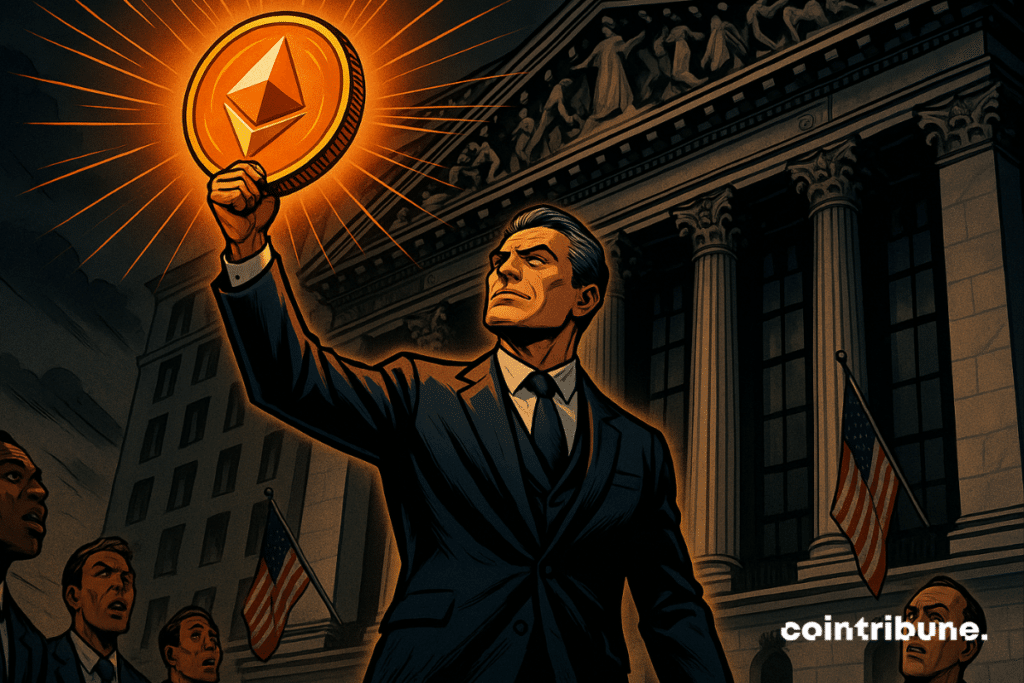Van Eck Calls Ethereum the Wall Street Token Amid Stablecoin Growth
Ethereum, a “Wall Street token”? That’s how Jan van Eck, CEO of investment management firm VanEck, described it, suggesting it could become the go-to blockchain for banks as they prepare for the rise of stablecoins. He argues that the growth of stablecoins is pushing financial institutions to rethink how they process digital payments, and Ethereum’s technology gives it a strong advantage.

In brief
- Van Eck calls Ethereum a “Wall Street token” amid rising stablecoin adoption.
- Stablecoin market cap tops $280B; weekly growth slows to ~$1.1B.
- Exchange reserves hit $68B, led by USDT ($53B) and USDC ($13B).
Van Eck on Banking and Stablecoins
Van Eck explains that banks and service providers will soon be unable to avoid stablecoin transactions. As a result, the platforms most likely to lead in this space are Ethereum itself or other systems built using its underlying model. The blockchain’s ability to support programmable financial applications may give it an advantage over other platforms.
It’s very much what I call the Wall Street token. And what I mean by that is, if you think that because of stablecoins now, every bank and every financial services company has to have a way of taking in stablecoins.
Jan van Eck
At the same time, the regulatory environment is also shifting. With the Genius Act now in effect after being signed into law by President Donald Trump, the United States has introduced its first piece of federal legislation that addresses stablecoins.
This development outlines a framework for how these digital assets may fit within the financial system and gives banks greater certainty as they prepare to integrate them into their services.
Growth Slows but Stablecoin Reserves Hit Record
The stablecoin market is showing signs of both strong adoption and slower growth. Key figures highlight this trend:
- Market capitalization has surpassed $280 billion, reflecting rapid expansion.
- Weekly growth in stablecoin market capitalization is now around $1.1 billion, showing a slowdown from earlier periods, according to CryptoQuant.
- USDT’s 60-day growth is about $10 billion, a drop from earlier highs above $21 billion.
- Despite the slowdown, exchange reserves of stablecoins hit a record $68 billion on August 22, exceeding the previous peak from February 2022.
- USDT makes up the bulk of these reserves with $53 billion, while USDC accounts for $13 billion.
Banks Under Pressure to Adapt
For Van Eck, these developments leave banks with little choice but to prepare. In the Fox Business interview, Van Eck emphasized that companies will need to adopt technology to handle stablecoins over the next 12 months. He noted that while the shift may take time, financial services firms cannot afford to turn away digital payments from clients.
Supporting this trend, a report from digital asset platform Fireblocks shows that 90% of institutional players surveyed are exploring ways to integrate stablecoins into their operations.
Meanwhile, corporate activity has played a central role in Ethereum’s recent momentum. Treasury firms have collectively acquired more than $6 billion worth of ETH in the past month. BitMine and SharpLink have been the most prominent buyers. This wave of accumulation shows how Ethereum is being positioned as a practical asset within corporate finance rather than remaining limited to speculative trading.
Following this trend, ETH reached a record high of $4,946 on August 24. It has since slipped by about 5%, trading around $4,600 at the time of writing.
Maximize your Cointribune experience with our "Read to Earn" program! For every article you read, earn points and access exclusive rewards. Sign up now and start earning benefits.

Ifeoluwa specializes in Web3 writing and marketing, with over 5 years of experience creating insightful and strategic content. Beyond this, he trades crypto and is skilled at conducting technical, fundamental, and on-chain analyses.
The views, thoughts, and opinions expressed in this article belong solely to the author, and should not be taken as investment advice. Do your own research before taking any investment decisions.